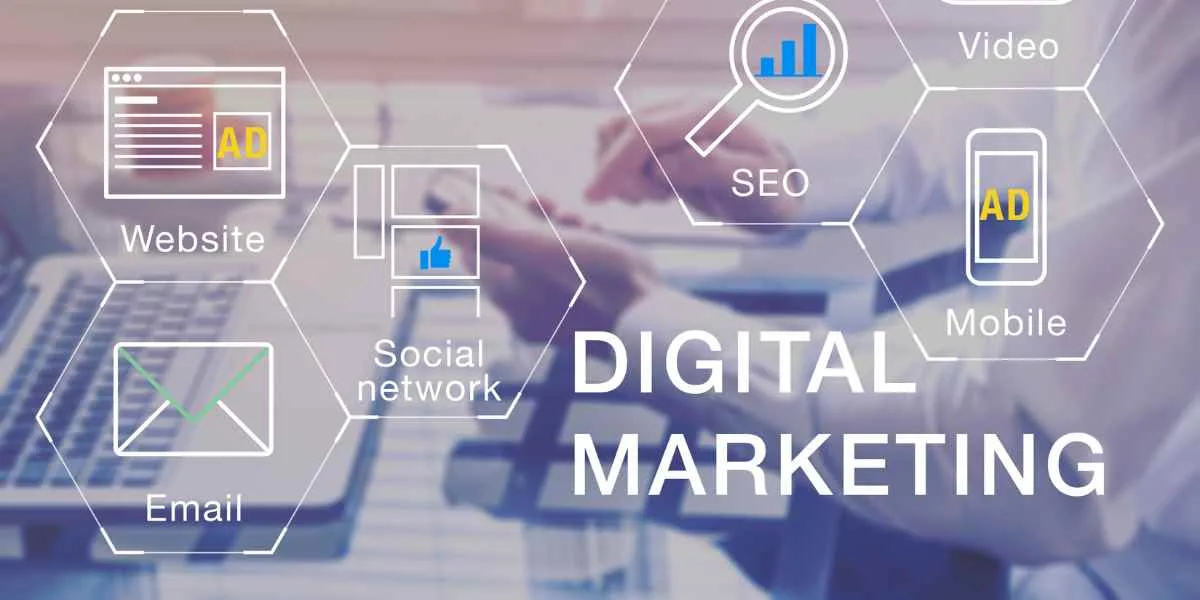Listen to this Article
Are you ready to spice up your marketing seminar presentation? As a veteran in the seminar marketing space, you understand the process and the results. You’ve presented dozens of times to qualified prospects and turned many attendees into profitable clients. However, your presentation has become something more out of habit than passion, and maybe it’s also losing its appeal with your prospects. If that’s your situation, it might be time to spice up your marketing seminar. But how? Here are some ideas that will breathe new life into your marketing seminar presentation. Let’s go!
Set Your Goals
Setting goals provides your marketing efforts with a clear sense of direction. It’s like outlining a map before embarking on a journey—you know where you’re headed and how to get there. Clear goals help you channel your creativity and resources toward a unified purpose.
Plus, goals act as benchmarks against which you can measure your progress and success. They provide tangible metrics to track your accomplishments, helping you gauge the effectiveness of your marketing initiatives. This data-driven approach enables you to identify what’s working, what’s not, and where adjustments are needed. As the saying goes, “What gets measured gets managed.”
Lastly, they are powerful motivators. They fuel your passion and drive, igniting a sense of purpose in your marketing endeavors. When you have a target to strive for, you’re more likely to stay committed and dedicated to your tasks.
Know Your Audience
In the dynamic world of marketing, a fundamental principle serves as the compass guiding every successful campaign: knowing your marketing audience. This golden key has the potential to unlock unprecedented levels of engagement, resonance, and conversions.
Every person in your audience has unique interests, preferences, and needs. And your job is to convey a message to this group that motivates and moves them to action. Without knowing who they are, your words may be brushed aside or alienate some. When you know your audience, you can tailor your communication to resonate with their pain points, aspirations, and desires. This personal touch captures their attention and makes them feel understood and valued.
Gone are the days of casting a wide net and hoping for a catch. With audience insights in hand, you can precisely target your efforts to reach the individuals who are most likely to be interested in what you offer. This not only maximizes the efficiency of your marketing budget but also minimizes the annoyance factor for consumers who receive irrelevant messages.
What does your audience want to know? How can you align your presentation with your audience’s goals, objectives, and focus? When you figure that out, your presentation will convert more prospects than ever.
Increase and Improve Your Visuals
Visuals play a crucial role in enhancing the engagement, comprehension, and overall impact of seminar marketing events. In fact, research shows 65% of people are visual learners. Plus, the human brain can process images and videos 60,000 times faster than text. That’s huge! Let’s use that to your benefit at your next seminar marketing event. Design your presentation to be more engaging by including visuals that can help grab your audience’s attention and keep it.
What kind of visuals work best? Obviously, the first consideration is your presentation slides, which should have well-designed with concise text, impactful images, and key points that can help guide the audience through the seminar content. But don’t stop there. Other visuals can help highlight your message, keep the audience focused, and create a memorable experience.
Visuals to Explain:
Infographics: Complex information can be simplified and made more visually appealing through infographics. They’re great for illustrating statistics, processes, and data-driven insights.
Charts and Graphs: Visual representations of data and trends help the audience understand and remember information more easily. Bar graphs, pie charts, and line graphs can effectively convey your message.
Videos: Short video clips or animations can break up the presentation and add a dynamic element. Use videos to showcase product demos, customer testimonials, or explain intricate concepts.
Testimonials and Case Studies: Showcase success stories and real-world examples through quotes, images, or short video clips. This adds credibility to your seminar content.
Timelines: Visual timelines can provide a historical perspective or illustrate the progression of a particular topic over time.
Visuals to Engage:
Interactive Quizzes: Engage the audience with interactive quizzes or polls. Display questions on the screen and encourage attendees to participate using their smartphones or other devices.
Live Demonstrations: If feasible, conduct live demonstrations of products or processes. This provides a tangible experience for attendees and helps them connect with the content.
And don’t forget your branding elements. Incorporate your company’s logo, colors, and tagline consistently throughout the visuals to reinforce your brand identity. A well-balanced combination of these visuals can enhance engagement, facilitate learning, and leave a lasting impression on seminar attendees.
Tell Stories and Use Humor
Stories are a potent tool for persuasion because they tap into the fundamental ways our brains process information, engage our emotions, and create connections. Your audience wants to be educated AND entertained. And for them to do business with you, they want to like and understand you. By telling funny, relatable, or touching stories, you can connect on a deeper level and start building relationships with your audience.
Why It Works:
Emotional Connection: Stories have the power to evoke emotions. When we hear a compelling story, we can relate to the characters, their struggles, and their triumphs. Emotions play a significant role in decision-making, and a persuasive story can stir empathy, compassion, or excitement in the audience, making them more receptive to the message.
Memory Retention: The brain is wired to remember stories better than dry facts or data. Narratives engage multiple areas of the brain, including those responsible for sensory experiences. This multisensory processing leads to better memory retention, allowing the audience to recall the story’s details and the message it conveys.
Engagement and Attention: Stories captivate attention by providing a structured, coherent, and engaging narrative. When engrossed in a story, people are less likely to become distracted, ensuring the persuasive message remains at the forefront of their minds.
Relatability: Stories often feature relatable characters facing relatable challenges. This creates a sense of identification between the audience and the story’s characters. When people see themselves or their struggles mirrored in a story, they become more invested in the outcome and more likely to be persuaded.
Why It Converts:
Simplification of Complex Ideas: Complex concepts or abstract ideas can be difficult to convey directly. Stories provide a way to simplify these ideas by putting them into context and presenting them in a more tangible and understandable manner.
Influence on Perceptions: Stories can shape how people perceive and interpret information. A well-constructed story can frame the narrative to align with the desired perspective, subtly guiding the audience toward a specific conclusion.
Overcoming Resistance: Audiences may initially resist a persuasive message, especially if it challenges their beliefs. Stories provide a non-confrontational way to introduce new ideas or viewpoints, allowing the audience to explore alternative perspectives without feeling threatened.
Illustration of Benefits: Stories can vividly illustrate the benefits or positive outcomes of a particular action or decision. By showing how others have benefited from the suggested course of action, stories help the audience visualize the potential advantages, making the persuasive message more convincing.
And don’t overlook the fact that people naturally enjoy stories. The entertainment factor keeps the audience engaged and receptive to the narrative, making them more open to being persuaded. Don’t be afraid to highlight your personality and humor in your storytelling. Prospects want to do business with someone they trust and like – and stories help solidify that person as you.
Hone your public speaking skills
There’s no such thing as practicing too much, especially regarding your marketing presentation. The more you practice, the more confident you will be when speaking publicly and the more polished your presentation will be. Delivering a successful seminar requires a combination of effective presentation skills that captivate your audience, convey your message clearly, and leave a lasting impact.
Public Speaking Tips:
Clarity and Structure: Organize your seminar content clearly and logically. Use a well-defined introduction, main points, and a conclusion to guide your audience through the presentation. Avoid jargon and complex language, and aim for simplicity and clarity.
Engaging Opening: Start with a captivating opening that hooks your audience’s interest. Use a surprising fact, a thought-provoking question, a relevant story, or a powerful quote to draw them in from the beginning.
Eye Contact & Body Language: Maintain steady and genuine eye contact with your audience. It conveys confidence, sincerity, and establishes a personal connection. Your body language speaks volumes. Stand tall, use open gestures, and move purposefully. Avoid fidgeting or distracting mannerisms that could take away from your message.
Voice Modulation: Vary your tone, pitch, and pace of speech to maintain your audience’s interest. Monotone delivery can lead to disengagement, while dynamic voice modulation keeps listeners attentive.
Empathy and Connection: Show genuine empathy towards your audience’s needs, concerns, and interests. Building a connection fosters a sense of rapport and makes your content more relevant.
Get involved with your audience
Marketing seminars are powerful platforms for sharing educational information. While attending a seminar is valuable, actively engaging with the content and fellow attendees can take the experience to a whole new level.
Passive listening can only take your audience so far. By having them actively participate in discussions, asking questions, and sharing insights, you transform the seminar into an interactive learning experience. Audience involvement offers the chance for prospects to receive personalized advice and solutions. Think of Q&A sessions or group discussions about experiences and concerns you have the expertise to correct or manage.
Other interactive ideas could include playing games, asking for feedback on the fly, and awarding winners with free private consultations. Or, at the end of the event, take a group picture of all the attendees, and highlight the experience on social media, your newsletter, or other marketing platforms. Either way, active engagement makes the event memorable. Attendees are more likely to remember and connect with leaders who have interactive events. This can lead to an increase in post-seminar follow-up appointments and more business.
In the dynamic world of marketing, a passive approach won’t suffice. So, the next time you plan a marketing seminar, remember that active participation is your ticket to a transformative and rewarding experience.
Conclusion
Marketing seminars are a great way to engage, connect, and persuade an audience to become clients at your firm, residents in your community, or advocates for your brand. When designing your next seminar event or updating the one you have prepared, these tips will help you create a more dynamic, interactive event that will surely be remembered.
Whether new to seminar marketing or a veteran, LeadingResponse can help you outline and target your ideal prospect and plan the event to grow your business. With close to 30 years of experience and having completed over 1 million successful seminars, partner with LeadingResponse for the marketing solutions and expertise to grow your business. Let’s get started.








